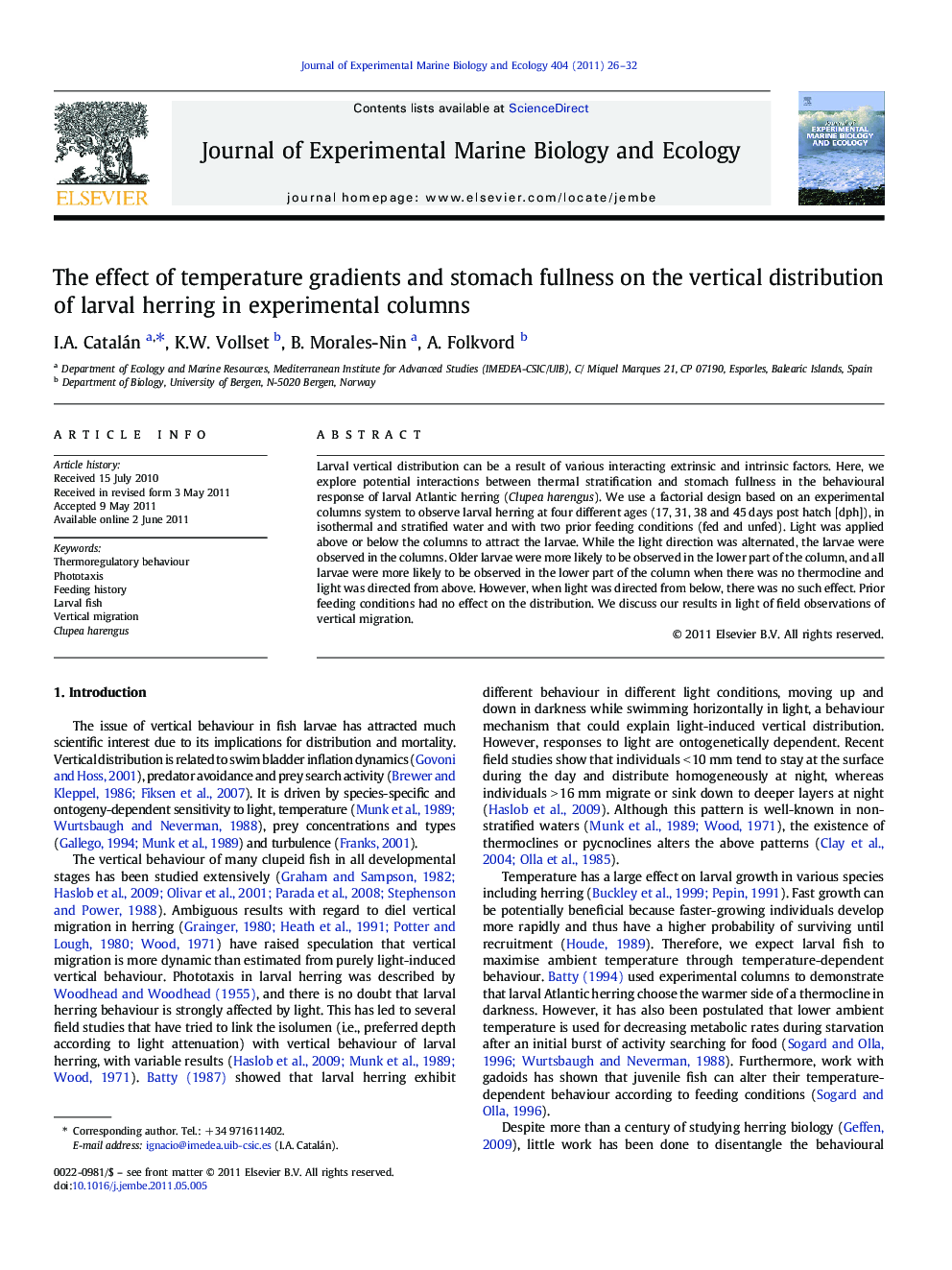| Article ID | Journal | Published Year | Pages | File Type |
|---|---|---|---|---|
| 4396152 | Journal of Experimental Marine Biology and Ecology | 2011 | 7 Pages |
Larval vertical distribution can be a result of various interacting extrinsic and intrinsic factors. Here, we explore potential interactions between thermal stratification and stomach fullness in the behavioural response of larval Atlantic herring (Clupea harengus). We use a factorial design based on an experimental columns system to observe larval herring at four different ages (17, 31, 38 and 45 days post hatch [dph]), in isothermal and stratified water and with two prior feeding conditions (fed and unfed). Light was applied above or below the columns to attract the larvae. While the light direction was alternated, the larvae were observed in the columns. Older larvae were more likely to be observed in the lower part of the column, and all larvae were more likely to be observed in the lower part of the column when there was no thermocline and light was directed from above. However, when light was directed from below, there was no such effect. Prior feeding conditions had no effect on the distribution. We discuss our results in light of field observations of vertical migration.
Research highlights► We analysed the vertical distribution of larval Atlantic herring in response to stratification and stomach fullness. ► Light direction was used as a mean to attract larvae to the thermocline. ► Water column stratification and larval age explained most of the observed results. ► Prior feeding conditions had no effect on the distribution in the experimental columns.
